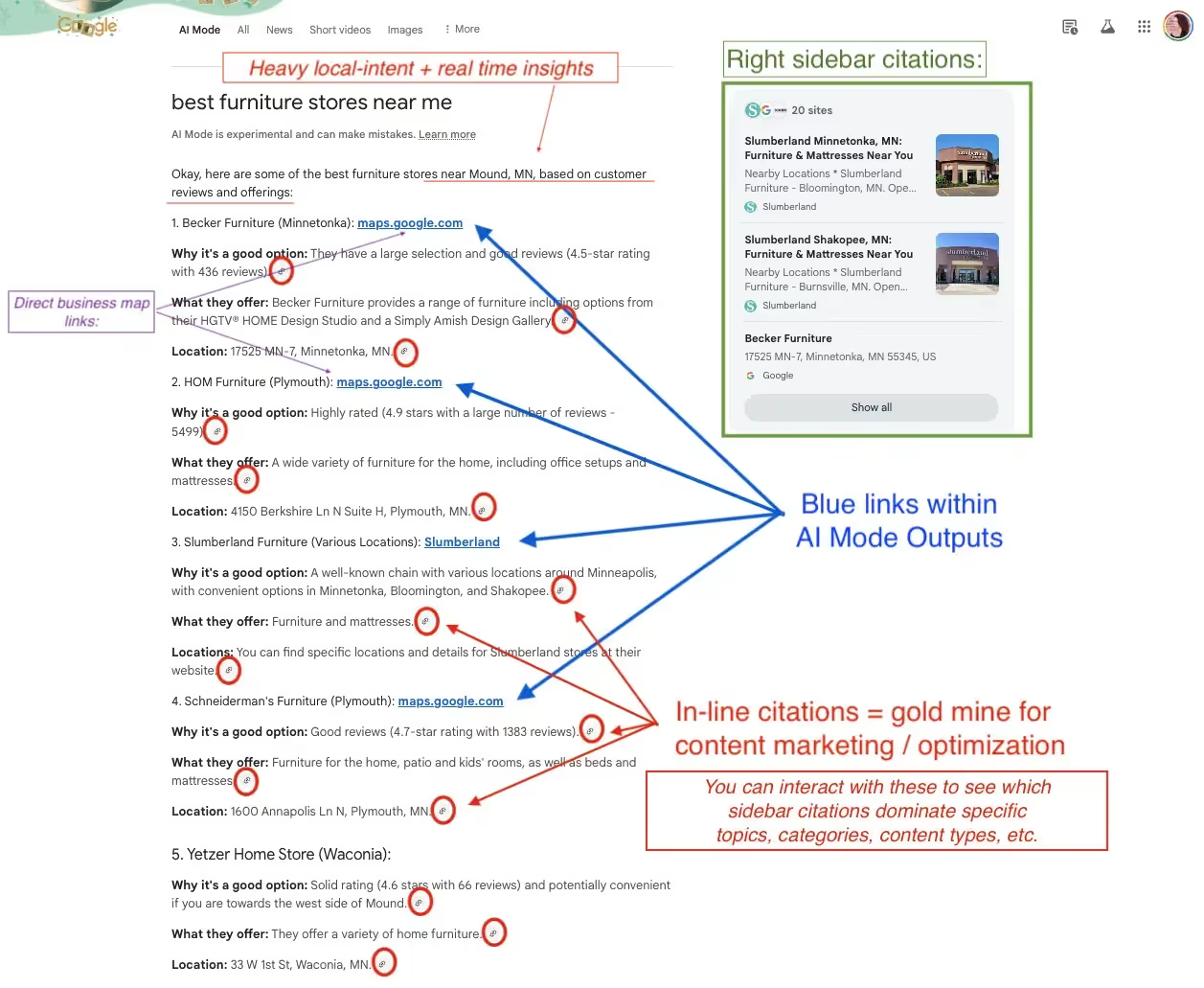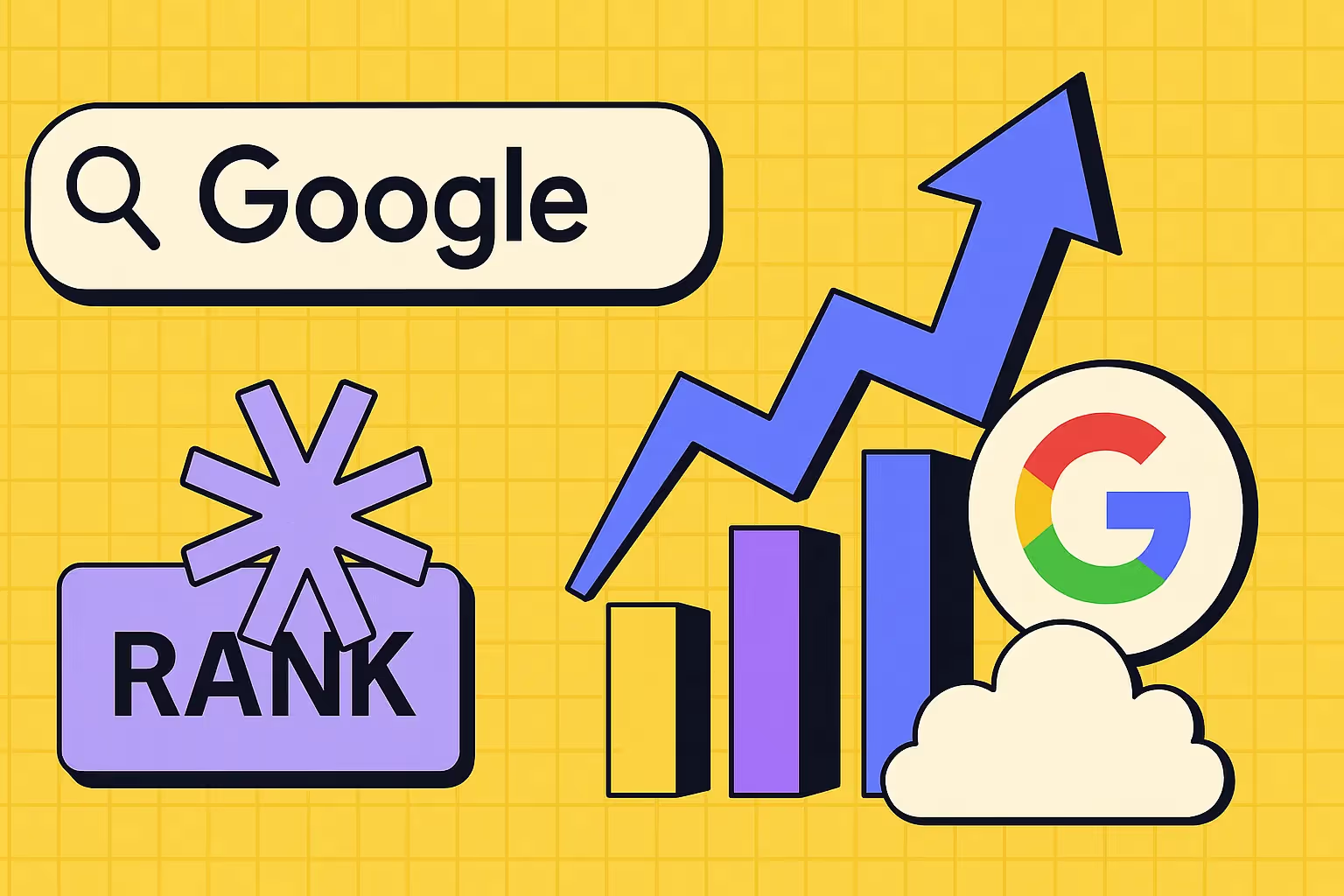As a marketer, you’ve probably felt that unsettling moment by now: the familiar patterns in your analytics dashboard start to blur, and the strategies that once drove results suddenly feel outdated. Your coffee sits forgotten as you realize the game has changed—SEO isn’t just about ranking for blue links anymore. Now, it’s about becoming the trusted answer, the authoritative voice, and the brand that Google’s AI chooses to spotlight in its dynamic, conversational search results.
You’re not alone in this. As David Shapiro, CMO of Unabated, puts it,
“Search hasn’t been solely about Google for a few years now. Users increasingly seek information across platforms like YouTube, TikTok, ChatGPT and social media. This shift means that SEOs must adapt by focusing on creating content relevant to their brand and tailored to appear natively on these diverse platforms where people spend their time.”
In this blog, we'll explore what Google AI Mode actually is, how it impacts the traditional SEO practices you've relied on, and most importantly, provide actionable strategies to help your content rank in this new era of AI-powered search.
What is Google AI Mode?

Google AI Mode represents a fundamental shift in how search works. Instead of the traditional list of blue links we've grown accustomed to, AI Mode delivers conversational, AI-generated responses that synthesize information from across the web. This feature uses Google's advanced AI capabilities to provide users with comprehensive answers to their queries without requiring them to click through to multiple websites.
Google AI Mode is designed to enhance the search experience by making it more intuitive and efficient. When users activate AI Mode, they receive an AI Overview, a concise summary that addresses their query directly, often eliminating the need to visit multiple sources.
How Does Google AI Mode Impact SEO?

1. Visibility Shift
With AI Mode, traditional organic listings are often pushed further down the search results page, as AI-generated responses and overviews take center stage. This change means that simply ranking on page one is no longer enough, your content must be recognized by Google’s AI as a reliable source to be included in these new answer boxes and summaries.
2. Authority Matters More
Google’s AI is designed to prioritize information from trustworthy, authoritative sources. The importance of E-E-A-T (Experience, Expertise, Authoritativeness, Trustworthiness) has never been greater. Content that demonstrates real expertise, is well-cited, and comes from reputable domains is far more likely to be included in AI-generated answers.
3. Content Format Evolution
AI Mode favors content that is clear, well-structured, and directly answers user questions. Pages that are long-winded, overly promotional, or lack focus are less likely to be featured. Instead, concise, value-driven content that anticipates user intent and provides actionable insights is prioritized. Structuring your content with headings, bullet points, and FAQs can help Google’s AI easily extract and summarize your information.
4. Reduction in CTR Due to Zero-Click Search
As Google’s AI provides direct answers within the search results, users are increasingly finding what they need without ever clicking through to a website. This trend leads to a noticeable reduction in click-through rates (CTR) for traditional organic listings.
How does Google AI Mode Work

To make sense of Google AI Mode’s complexity, let’s simplify the process as Mike King explains it:
You type a question into Google and, instead of the usual blue links, you see a conversational paragraph that seems to answer—and even anticipate—your next question. That’s Google AI Mode: search that feels more like chatting with an expert than browsing a list of results.
But behind this seamless answer is a complex, multi-layered process. When you submit your query, Google’s AI doesn’t just look for a single answer. Instead, it quietly transforms your question into a web of related and follow-up questions, some explicit, some inferred, and some even predictive. This “fanning out” approach allows Google’s models to scan the internet for not just facts, but for nuanced ideas and perspectives that can build a logical chain of reasoning—essentially, the AI is piecing together a puzzle to deliver the most complete and relevant response.
What’s truly revolutionary is how Google’s AI selects content. It’s not simply about ranking pages by keywords anymore. The system evaluates documents based on how well they support each step in its reasoning process. Multiple models—each specialized for tasks like summarizing, comparing, or validating—work together, contributing their insights. The final answer you see is a carefully assembled script, drawing from this ensemble cast of AI models.
The system goes through your search history, clicks, location, and even signals from your Google apps to create a “profile” of your preferences and intent. This doesn’t just tweak the answer’s details—it fundamentally shapes what information is considered relevant for you, right now.
When the answer appears, your website might be cited—or it might not. Sometimes, a single sentence from your content is chosen, not because you ranked for a specific keyword, but because it perfectly fits a sub-question in the AI’s intricate logic.
Actionable Strategies to Rank on Google AI Mode
Now that we understand what Google AI Mode is and how it works, let's explore specific strategies to help your content perform well in this new environment:
1. Use Comprehensive, Question-Focused Content
Content that thoroughly addresses specific questions is more likely to be featured in AI Overviews. Consider organizing content around questions your audience is actually asking, and provide clear, comprehensive answers. FAQ sections, Q&A formats, and content that naturally anticipates and addresses follow-up questions perform particularly well in AI Mode.
2. Structure Content for Easy Parsing
AI systems favor content with clear structure and organization. Use descriptive headers, bullet points, and concise paragraphs to make your content more accessible to both human readers and AI algorithms. This structured approach helps Google's systems identify key information and include it in AI Overviews.
3. Strengthen Your E-E-A-T Signals
Google's AI heavily weighs expertise and trustworthiness when selecting sources for AI Overviews. Enhance your E-E-A-T signals by:
- Including author bios that highlight relevant credentials and experience
- Citing reputable sources and providing proper attribution
- Updating content regularly to ensure accuracy and relevance
- Building a portfolio of in-depth, authoritative content in your niche
4. Optimize for Featured Snippets
There appears to be a correlation between content that ranks for featured snippets and content that gets included in AI Overviews. Focus on creating concise, informative passages that directly answer common questions in your field. This approach increases your chances of being featured in both traditional search results and AI-generated responses.
5. Diversify Your Content Types
AI Mode draws information from various content formats, including articles, videos, images, and social media posts. Create a diverse content portfolio that addresses your audience's needs across multiple channels and formats. This approach aligns with the search everywhere optimization concept, increasing your chances of being discovered regardless of how users are searching.
6. Promote Content Across Platforms
This means recognizing that your audience is no longer confined to traditional Google search results. To maximize your brand’s visibility, it’s essential to ensure your content is discoverable and relevant wherever your audience might search, whether that’s on YouTube, TikTok, Reddit, or within conversational AI tools.
Conclusion
As we've explored throughout this blog, Google AI Mode represents both a challenge and an opportunity. The traditional SEO playbook is evolving, with a greater emphasis on comprehensive content, structured information, and demonstrable expertise.
While the specifics of Google's AI systems will continue to evolve, the fundamental principles of creating valuable, authoritative, well-structured content remain constant. By focusing on these principles and staying adaptable, you can position your brand for success in the AI-powered search era.
For marketers looking to streamline the creation of AI-optimized content, Yarnit offers significant advantages. Yarnit helps you develop comprehensive, structured content that aligns with the preferences of both human readers and AI systems—making it easier to maintain visibility as search continues to evolve.
By embracing these changes and adapting your strategy accordingly, you can ensure your content continues to reach and resonate with your target audience, regardless of how they're searching.










